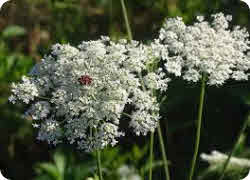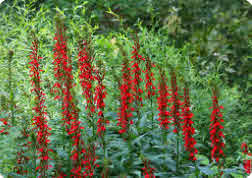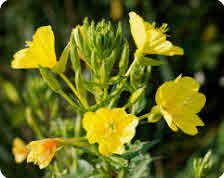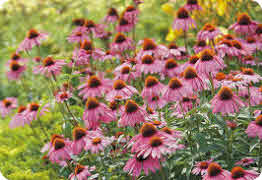Wildflowers
Growing Wildflowers in your garden is a beautiful addition to any garden, offering a range of colors, shapes, and sizes that can enhance your outdoor space. Here’s a guide on how to grow wildflowers in your garden.
Why Grow Wildflowers?
There are several reasons why you might want to grow wildflowers in your garden:
- Biodiversity: Wildflowers can help to increase biodiversity in your garden by attracting a variety of insects and birds.
- Low Maintenance: Once established, many wildflowers require little care beyond occasional watering and weeding.
- Beauty: Wildflowers offer a natural, rustic beauty that can make your garden feel more like a meadow or woodland.
Types of Wildflowers
More than a hundred different wildflowers you may consider in your garden, depending on the place in the world where you live. Hence we like to give just a small selection of the most common you might find in people’s gardens:

Sunflowers
Sunflowers (Helianthus): Known for their large, bright yellow blooms, sunflowers are a classic choice for a wildflower garden.

Poppies
Poppy (Papaver orientale): Flowers bloom in late spring or early summer. 4-6 inch showy flowers have black/purple centers surrounded by petals that can be pink, red, white, or orange.

Daisy
Ox-eye daisy, Oxeye daisy, dog daisy, marguerite (Leucanthemum vulgare) grows to a height of 80cm (31 inches). Flowering occurs from May to October.

Butterfly Weed
Butterfly Weed (Asclepias tuberosa): The wildflower, common in prairies and grasslands, serves as a host plant to monarch butterflies. It has bright orange-yellow blooms.

Indian Blanket
Indian Blanket (Gaillardia pulchella): Adds a pop of bright red-orange bordered by yellow to gardens throughout the southern and central U.S.

New England Aster
New England Aster (Symphyotrichum novae-angliae): Native to the northeastern U.S., this is a cheerful salt-tolerant perennial suitable for roadside plantings.

Blanket Flowers
Blanket Flowers (Gaillardia aristata): A North American plains wildflower, offers a two-toned look.

Queen Anne’s Lace Wildflower
Queen Anne’s Lace Wildflower (Daucus carota): Related to carrots, if you pull up one of these wildflowers, you can smell a carrot-like fragrance emanating from the bruised roots.

Bachelor Buttons
Bachelor Buttons (Centaurea cyanus and Centaurea montana): The origin of the name “bachelor buttons” comes from the way these flowers were once used.

Bee Balm
Bee Balm (Monarda didyma): Known for its attractive flowers that attract bees and other pollinators.

Black-Eyed Susan
Black-Eyed Susan (Rudbeckia hirta): These flowers have golden petals with a dark center.

Cardinal Flower
Cardinal Flower (Lobelia cardinalis): Known for its bright red flowers.

Common Evening Primrose
Common Evening Primrose (Oenothera biennis): These plants produce yellow flowers that bloom in the evening.

Coneflower
Coneflower (Echinacea purpurea): These plants are known for their large, purple petals and spiky, cone-shaped centers.

Common Milkweed
Common Milkweed (Asclepias syriaca): Is a plant known for its pink flowers and their ability to attract butterflies.

Dogtooth Violet
Dogtooth Violet (Erythronium dens-canis): It is native to central and southern Europe from Portugal to Ukraine. Despite its common name, it is not closely related to the true violets.

Dooryard Violet
Dooryard Violet (Viola sororia): They are true violets, with purple flowers and heart-shaped leaves.

California Poppies
California Poppies (Eschscholzia californica): This orange flower is the state flower of California but can be grown in many different regions.
Video Gallery on Wildflowers
Selection of expert videos on how to create your own wildflower garden or meadow.
-

How To Create A Wildflower Meadow in 1 Year!! Native Garden Makeover! DIY No Lawn
-

I Planted A Wildflower Meadow 🌼🐝🦋| Amazing Lawn Transformation | From Seeds to Blooms
-

How to start a wildflower garden 💐 Advice from a landscape designer
-

WILDFLOWERS: How to PLANT and GROW wildflowers that COME BACK YEAR after YEAR!
-

How to create a mini meadow in your garden
-

How To Make a Mini Wildflower Meadow in Your Garden
-

Growing Wildflowers for Bees & Butterflies
-

Complete Guide to Butterfly Weed - Grow and Care, Asclepias tuberosa
-

Woodland Wildflower Identification for Forest School – How to Identify 10 Wildflowers & their Uses
How to Select Wildflowers
When growing wildflowers and selecting them for your garden, consider the following factors:
- Climate and Soil: Different wildflowers thrive in different conditions. Therefore make sure to choose flowers that are suitable for your local climate and soil type. The Climate zone map may help you.
- Sunlight: Some wildflowers require full sun, while others prefer partial shade. Therefore consider the amount of sunlight your garden receives when selecting your flowers.
- Size: Wildflowers come in various sizes. While some can grow quite tall, others remain low to the ground. Therefore consider the size and scale of your garden when choosing your flowers.
In conclusion, growing wildflowers in your garden can be a rewarding experience. Not only do they add color and variety to your outdoor space, but they also support local wildlife and are relatively easy to care for.









